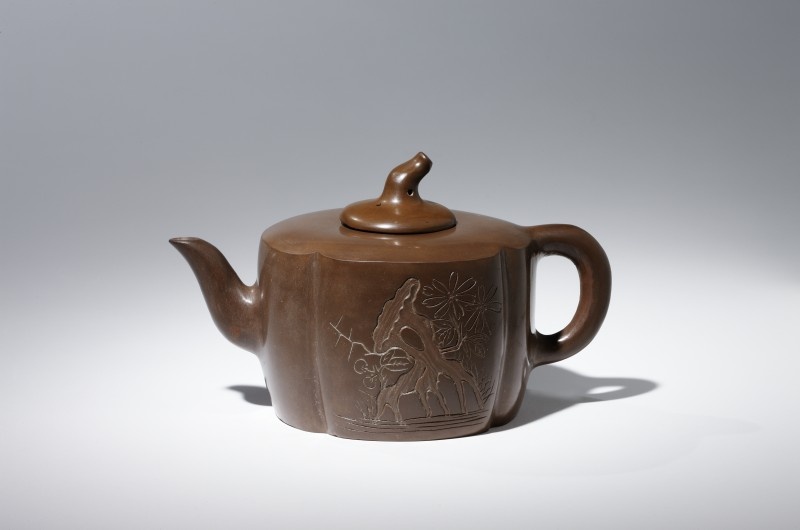Nicht nur in Europa wurden die chinesischen Yixing-Teekannen nachgeahmt, sondern auch in China selbst, insbesondere in der südlichen Provinz Guangxi, aus welcher auch dieses Stück stammt. Auch bei diesen Objekten ist hohe künstlerische und handwerkliche Qualität gegeben. Vielgestaltige Naturformen, etwa des Bambus, von Wurzelwerk oder, wie hier, von Kürbissen, wurden neben geometrischen Grundformen verwendet. Mehrere Meister konnten bei der Herstellung einer solchen Kanne mitwirken: Einer töpferte die Kanne, einer wählte ein Gedicht aus, ein anderer schrieb es kalligrafisch auf den Kannenkörper. (Text: Christoph Deuter)
Inschrift: "Glücksverheißung, Harmonie und Pietät"
Ankauf 1920
en

